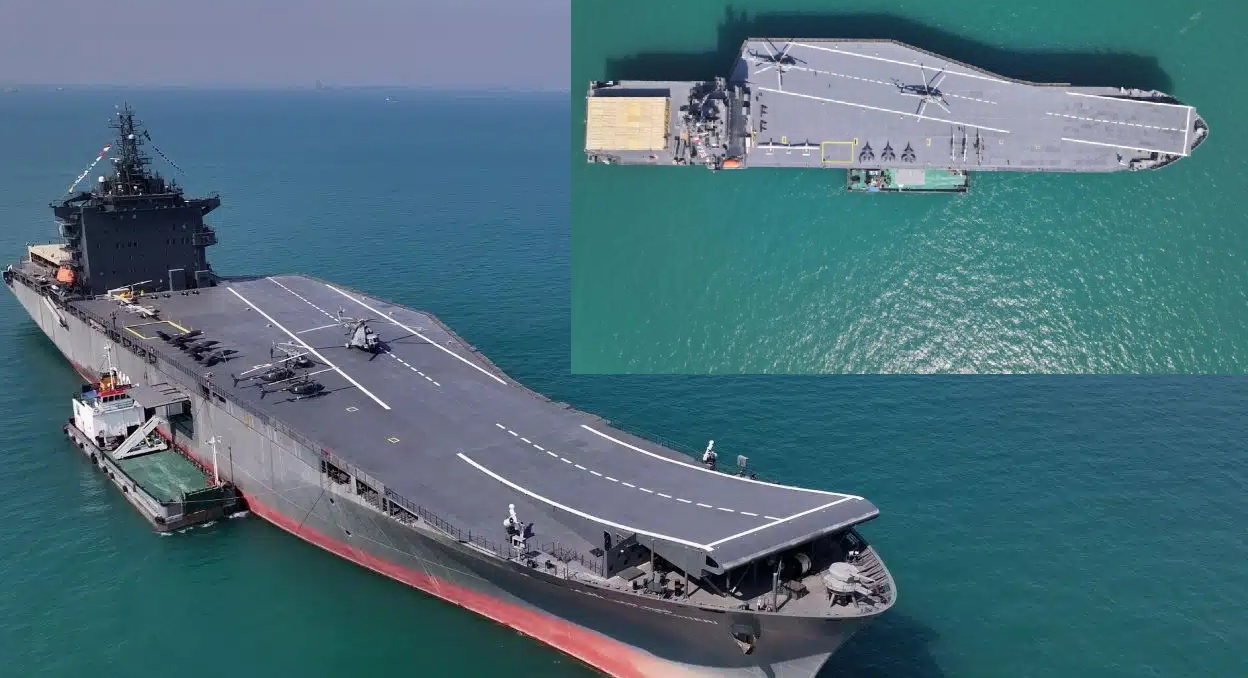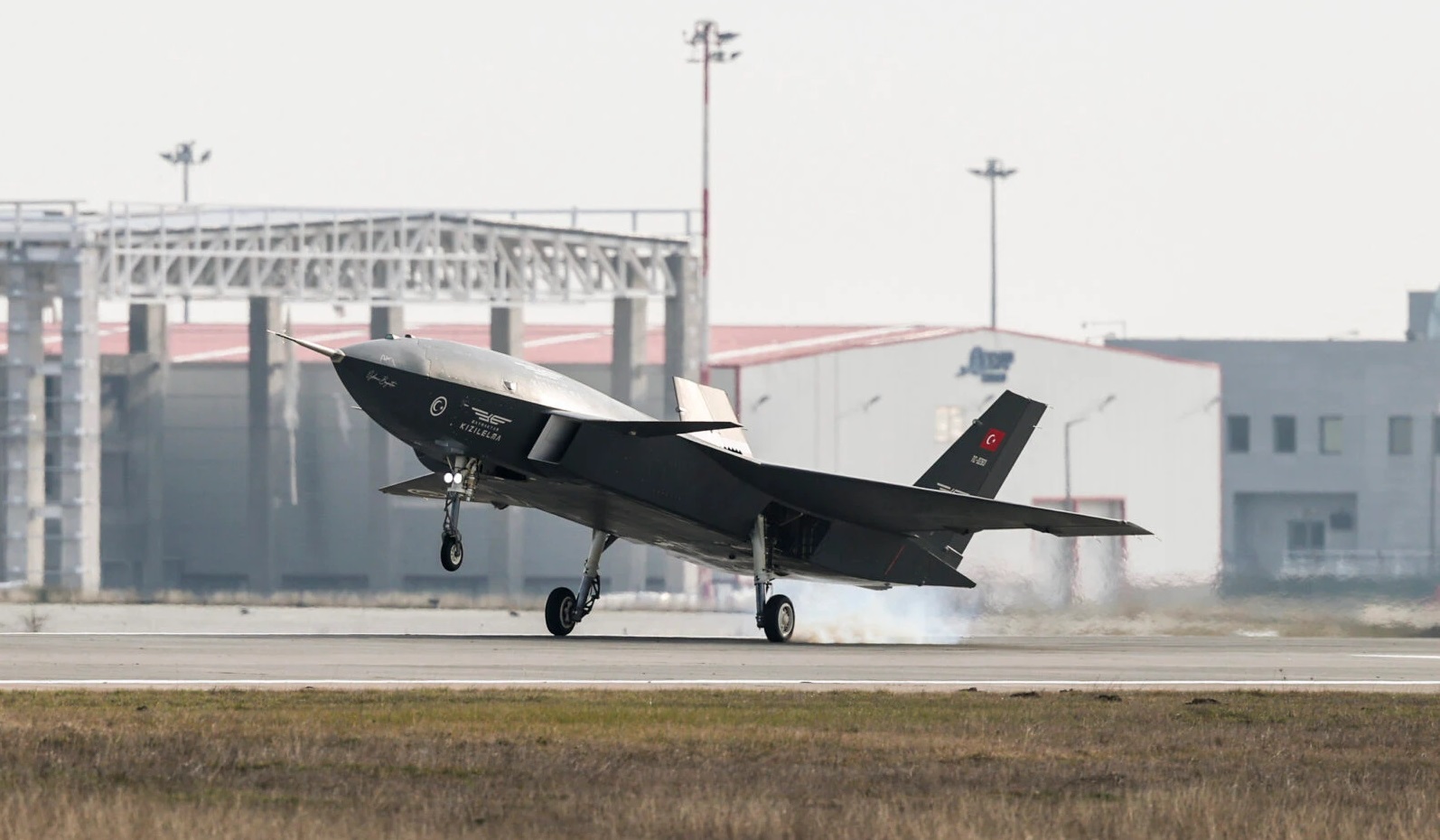Iran Unveils Shahid Bahman Bagheri Drone Carrier for the IRGC Navy

Iran has taken a significant step in expanding its naval capabilities with the introduction of the Shahid Bahman Bagheri, a homegrown drone carrier that now forms part of the Islamic Revolutionary Guard Corps (IRGC) naval fleet. The vessel was officially delivered during a high-profile ceremony in Bandar Abbas, attended by Rear Admiral Alireza Tangsiri, Commander of the IRGC Navy. This development is being hailed as a major advancement in Iran’s maritime strategy, enabling long-range operations and boosting the country’s power projection in distant waters.
From Cargo Ship to Drone Carrier
The Shahid Bahman Bagheri is a striking example of military innovation, transformed from a commercial container ship—originally named Perarin—into a formidable drone carrier over a two-year period (2022–2024). This 240-meter-long vessel, with a displacement exceeding 40,000 tons, is designed to serve as a mobile airbase for Iran’s growing fleet of unmanned aerial vehicles (UAVs). It features a 180-meter flight deck equipped with a ski-jump ramp, optimized for drone takeoff and recovery.
Powered by a MAN B&W Type 8 S70 MC-C diesel engine, the carrier boasts a top speed exceeding 20 knots, giving it the agility required for extended naval operations. One of its most impressive features is its extraordinary operational endurance. According to Rear Admiral Tangsiri, the Shahid Bahman Bagheri has a range of 22,000 nautical miles, allowing it to remain at sea for a full year without refueling—a capability that dramatically extends Iran’s naval reach.
Unmanned Firepower: Qaher-313 UAVs Take Flight
The Shahid Bahman Bagheri is designed to accommodate a variety of UAVs, with recent footage confirming the deployment of Qaher-313 drones on its flight deck. These drones, believed to be powered by Jahesh-700 turbofan engines, are compact yet capable of executing short-runway landings without the need for visible arresting gear. This suggests that Iran has refined the control and maneuverability of its drone fleet, potentially enabling precise strike missions and surveillance operations from sea-based platforms.
In addition to UAVs, the carrier can also deploy two helicopters, significantly enhancing its reconnaissance and rapid-response capabilities. While the exact number of UAVs stationed on board remains undisclosed, the vessel’s large deck space suggests a capacity for multiple drones, enabling sustained aerial operations.
Advanced Defense and Intelligence Capabilities
Beyond its drone-launching abilities, the Shahid Bahman Bagheri is equipped with a suite of advanced defense and surveillance systems. Reports indicate the presence of short- and medium-range air defense systems, electronic warfare (EW) suites, and Signals Intelligence (SIGINT) and Electronic Support Measures (ESM) capabilities, making it a highly versatile naval asset.
Perhaps most notably, Rear Admiral Tangsiri revealed that the carrier is also capable of deploying and operating guided unmanned underwater vehicles (UUVs)—a feature that could significantly bolster Iran’s maritime surveillance and submarine warfare tactics. This multi-domain capability suggests that the IRGC Navy is expanding its focus beyond traditional naval engagements, integrating aerial, surface, and sub-surface warfare strategies into a single platform.
Strategic Implications: A New Era for Iran’s Navy
The addition of the Shahid Bahman Bagheri to Iran’s naval arsenal marks a crucial shift in the country’s maritime strategy. Unlike traditional aircraft carriers, which rely on manned fighter jets, Iran’s approach centers around unmanned systems, reducing logistical challenges while increasing operational flexibility.
By fielding a drone carrier with such extensive endurance, Iran is effectively signaling its intent to operate in strategic waterways far beyond the Persian Gulf—including the Red Sea, Indian Ocean, and potentially even the Mediterranean. This could have significant implications for regional security, particularly as tensions persist between Iran and Western naval forces operating in the region.
Rear Admiral Tangsiri emphasized that the deployment of the Shahid Bahman Bagheri strengthens Iran’s defense and deterrence in international waters, allowing the country to better safeguard its national interests. Given the increasing role of drones in modern warfare, this move aligns with Iran’s broader military doctrine, which places heavy emphasis on asymmetric and unmanned warfare capabilities.
With its impressive endurance, advanced drone capabilities, and multi-domain warfare potential, the Shahid Bahman Bagheri represents a major leap forward in Iran’s naval ambitions. The IRGC’s strategy of repurposing commercial vessels into drone carriers suggests a cost-effective yet highly capable approach to expanding its maritime reach.
As the vessel begins operations, global defense analysts will be closely monitoring its deployment patterns and testing capabilities. Whether this carrier proves to be a genuine game-changer or simply a symbolic show of strength, one thing is clear: Iran has entered the era of naval drone warfare, and the Shahid Bahman Bagheri is its first step into uncharted waters.



